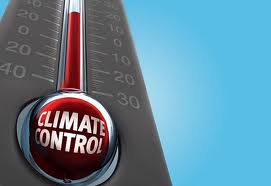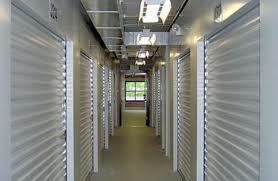
 Climate Controlled Self Storage Attracts New Clientele
Climate Controlled Self Storage Attracts New Clientele
There is no question that competition in self storage is getting tougher as more investors flock to the lucrative mini storage business. One way that you can stand out from the crowd is by offering Climate Controlled Self Storage Units.
If your self-storage business is in a part of the country that reaches temperatures above 90 degrees Fahrenheit, air conditioning is needed to protect items from problems like rotting or yellowing. Self-storage units located in areas that fall below 32 degrees Fahrenheit may need to be heated to prevent cracking or warping. Places with both extremes will need humidity protection. Any Self Storage Business, no matter where you are located, can benefit by adding climate controlled storage units.
Most of the items people have in their homes exist in a relatively narrow range of temperature and humidity. Any departure from this conditioned environment creates changes in the materials. Wood or fiber products naturally adjust to their environment by absorbing or giving off moisture until they reach the levels they previously existed in. Moisture can also cause changes as subtle as musty smelling linens or as dramatic as glue failure, warping or pealing in fine furnishings. Metal can rust, plastic can melt, furs can molt and cherished photos can color and curl. Musical instruments and paintings can be permanently damaged in an uncontrolled environment.
Customers who have items of value or plan to store their belongings for more than a few months will look for Self Storage Businesses that can offer protection for their valuables with Climate Control Self Storage. At MakoRabco, we have found that the additional cost of adding Climate Control Self Storage Units is easily outweighed by the additional business you will attract and the rates you can charge.

Below are some tips for adding Climate Control to your self-storage facility.
- Keep the temperatures between 55-75 degrees.
- Maintain relative humidity below 50% to deter mold and mildew growth.
- Cool with air conditioners, not swamp coolers.
- Use redundant cooling systems for back-up.
- Design the facility to use the gaps between the hallway and partitioning systems and the ceiling for air circulation to further control humidity.
- Control air flow by installing registers to restrict air in some areas while increasing it in others. This is especially important in wide hallways and at entry and exit doors.
- As a general rule, self-storage facilities usually require 1 ton (12,000 BTU) of coolng capacity per 1,200 to 1,500 square feet. (as compared to 1 ton per 700 square feet in residential buildings.)
- When you downsize the HVAC unit, it must move a greater volume of air. This requires longer, fewer cycles, which are less burdensome on the equipment and helps to extend its life and minimize maintenance. The greater volume of air also allows more moisture to be removed during the cycle period, providing better dehumidification.
- Because more power is required to start and charge an HVAC system during every cycle, it is more efficient to continuously operate 70 percent of the time.
- If your climate is extreme, you may not want to put your heat pump, HVAC or condenser equipment outdoors. However, if you install equipment inside, you will need to pipe out the condensate or install dryers to evaporate the condensation.
- Reduce operation costs by installing a programmable thermostat that turns the system on and off during certain times of the day.
As the industry's leader in climate control facility design and steel storage building and construction, MakoRabco can help you with your next self-storage project. Ask about our engineering and design services.

